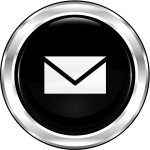I was reading an article in Information Week appropriately titled, “Eaten by the Email Monster.” http://www.informationweek.com/blog/main/archives/2006/08/eaten_by_the_em.html
It links to several useful articles on how to handle information overload. I thought I’d add my thoughts on how to efficiently process email: the 6-D Information Management System™:
1. DISCARD = Delete it
2. DELEGATE = Forward it
3. DO = Reply immediately if it will take you three minutes or less
4. DATE = Needs work but not now. The key is to somehow get it out of your in-box. Pick one favorite method and try to be consistent, so you don’t confuse your brain about what you did with that email. Options:
* Move to a process folder called “Action” or something similar.
* For emails that require action, move (NOT drag, which creates a copy) them to Tasks (or drag to the to-do icon in Lotus) by right-clicking the message and selecting Move to Folder, and then Tasks. A new Task automatically opens and inserts the email into the text portion of the message, which can now be replied to right out of the task). This physically removes the email from your in-box, not just create a copy.
* For time-sensitive emails (meetings or appointments), follow the same procedure above, but select Calendar after you Move to Folder, which will open a new calendar item and automatically move the email message to the text portion of the window.
* If you’d rather work with a paper copy, print the email and file it in your tickler folder. Create a personal folder called @Tickler and drag email there that requires follow-up. When the paper copy (trigger) comes up in your tickler file, you know the original is in your @Tickler folder. That will save you from having to retype the email message when you respond to it.
* Copy the email into the contact’s record in your contact management software (such as ACT or Goldmine) and schedule an activity to follow up.
* Set an email reminder (NOT a calendar reminder or Task reminder) by right-clicking in the flag area (NOT setting a flag) and selecting Add Reminder. Fill in the day and time you want the reminder on the email, and move the email to the proper project folder. You will get a reminder when the email isn’t in your in-box (Outlook 2003).
* Forward it back to yourself, select Options, and check “Don’t deliver before,” fill in a date and send. Delete original.
* Drag to the proper email personal folder, and write a to-do on your paper planning as a cross-reference to remember to do it.
5. DRAWER = If no action is required, but you’d like to keep the email for reference, create a personal folder for the project or reference type and drag the email to the correct folder. Or you could create a Word or other word processing document and save it on your hard drive.
6. DETER = Unsubscribe from email lists and tell your friends to stop sending you their “joke of the day”! Or use the Office Assistant (under “Tools”) or other Rules to automatically moving email from particular people to certain folders (or just delete it then).
I hope this helps! Force yourself to do one of the 6 D’s every singe time you look at a new email. All the email in your in-box will be new, and you will stop re-reading messages over and over. Do a major processing spree like this at least three times a day, but do NOT check them as they are coming in. Turn off the global alerts, set Rules to play for important people, and control your OCD trigger-happy email finger!




[…] filters on your email. Every email client lets you filter email according to specific rules, automatically discarding messages that fail to meet those standards. […]